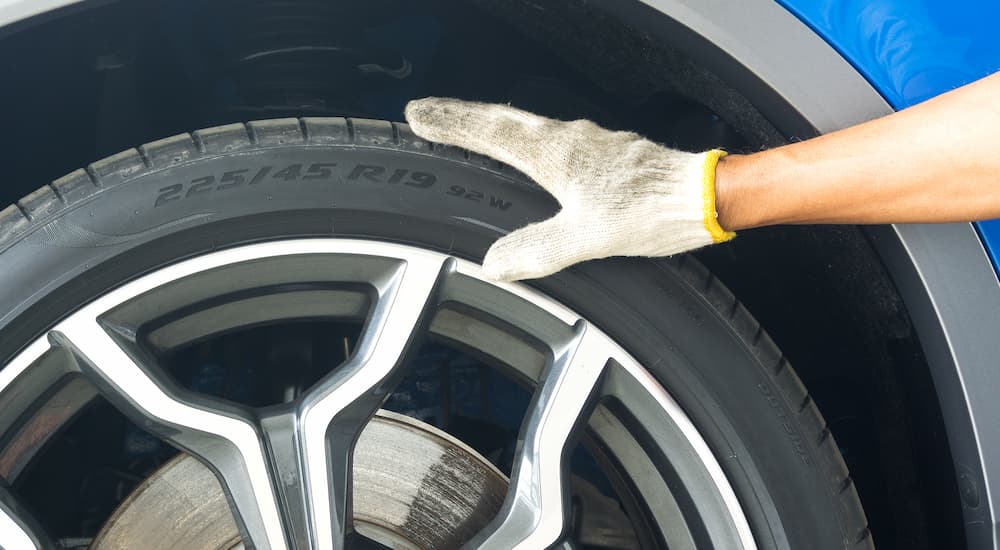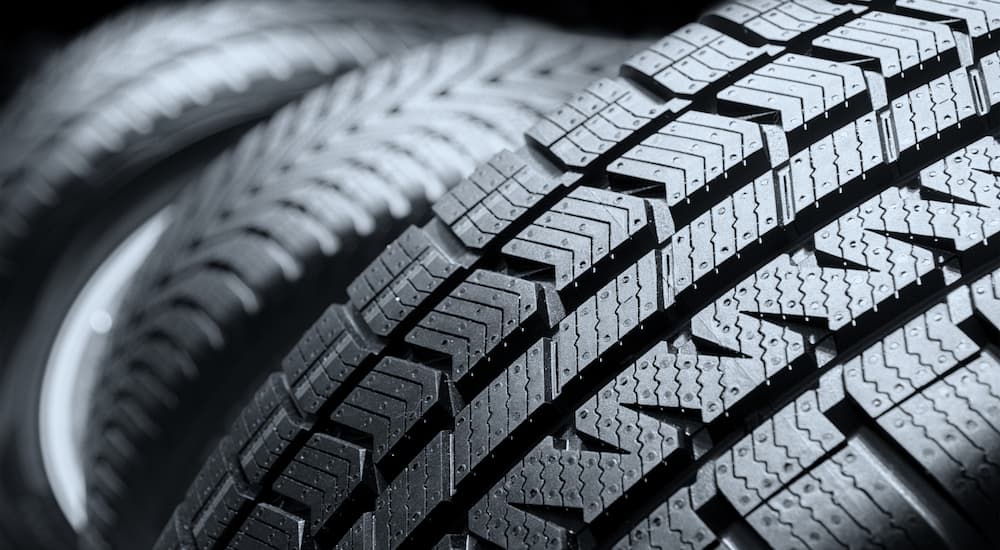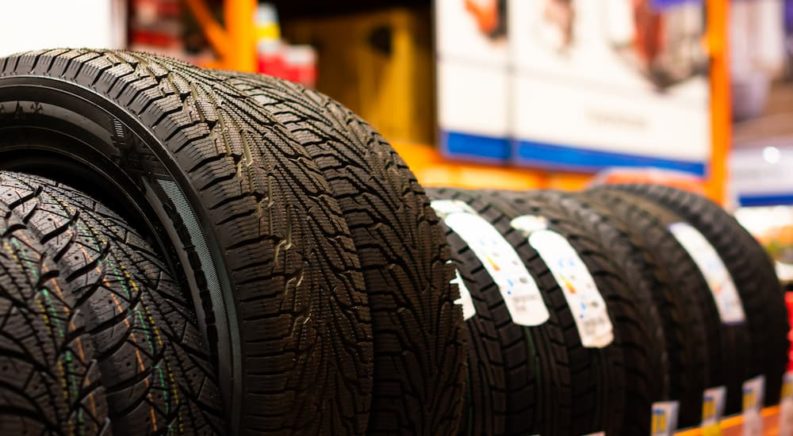Anyone can go to a tire shop or a local dealership and pay someone to put new tires on their vehicle, and they probably won’t even stop to consider what the new tires are. If you’re like me, however, you prefer to know that your tires are good quality, the proper size and make, and installed correctly, so you’re safe on the road. Before you start looking at tires for sale, however, it’s important to ensure you know all of the information you need to get the right ones for your vehicle. This includes knowing how to read the code on the tires themselves so you can be sure you’re getting just what you’re looking for.
Looking at that code on your tires can be like trying to read something written in a different language. At first glance, it makes no sense. It’s really not that complicated; you just have to understand what it all means. Once you get the hang of it, the code is quite simple, and you’ll be able to ensure you get exactly the right tires installed on your vehicle.
Brand and Model
All of the information you need about a tire is printed on its sidewall, including the brand and usually the model of the tire made by that manufacturer. There are numerous tire makers out there, like Dunlop, Bridgestone, Goodyear, Michelin, and others, so you’ll have to decide on which brand and tire model you like the most. This is a big decision in and of itself, with plenty of arguments for one brand or another, just like anything else in this world. Ultimately, look at reviews and talk to service experts and other drivers to see what people prefer and have experienced on the road.
The Code on Your Tires
What we’re going to focus on primarily is the code and information that you’ll find printed on the tire alongside the brand and model name or style. Much of what you need is printed in the form of a code that provides you with a lot more information than you might realize at first glance. To help make things a little easier to break down, we are going to use an example code.
Example Code: P 215/65 R15 89H

Type or Class
The first letter in a tire code like this indicates the vehicle type or class that the tire is meant for. In our example, “P” means it is a Passenger tire, which is what you’ll find on cars, crossovers, and small pickup trucks. This is the most common type out there. Other types include “LT” for Light Truck, used by full-size pickups and large SUVs, as well as “T” for Temporary and “ST” for Special Trailer, such as a boat trailer.
Tire Width
Following the type letter is a three-digit number that indicates the width of the tire in millimeters. Specifically, this measures the tire from side to side, going from the inside of the sidewall up across the tread and down the other side to the edge of the other sidewall. In our example, the tire measures 215 mm, including the sidewall on both sides and across the surface of it.
Aspect Ratio
You’ll notice a slash after the tire width, then a two-digit number: this number is the aspect ratio. It’s a percentage of that overall tire width (our previous number) that indicates the size of the sidewall of the tire. In our example, we can see that the height of the sidewall is 65% of the tire’s width––larger numbers indicate a taller sidewall. This can be important as you’ll typically find performance-focused tires have shorter sidewalls to improve handling, so keep this in mind if you need new tires for a sports car or something similar.
Construction and Diameter
Next up is a letter and a two-digit number. The letter indicates the type of construction used, with “R” meaning it uses a radial or radial-ply design. The vast majority of tires on the road are radial tires. Some other types are used for massive construction vehicles and other specialized uses, but you’ll pretty much always shop for tires with R. Following this letter is the diameter, in inches, of the wheel it’s designed for. In our example, we’re looking at a radial tire made to fit a 15-inch wheel.
Load Index
Following the diameter number, you’ll find a two or three-digit number, which indicates the load index for that tire. This number isn’t a direct measurement or quantity; it’s a code used on a standard load-index and carrying capacity chart, which you can find quite easily online. The code indicates a particular weight that the tire can support. In our example, 89 indicates the tire can handle up to 1,279 lbs of weight.
Two important details about the load index: the amount is per tire, and it includes the vehicle, passengers, and everything else. In other words, with this example, the four tires on a vehicle would be able to support up to 5,116 lbs of total weight. If you have a big truck with a total weight rating of 6,000 lbs with a bunch of cargo loaded into it, for example, then each tire would need to have a capacity of 1,500 lbs, which is a rating of 95 or greater.

Speed Rating
Finally, after the load index, we have a letter––this is the speed rating for the tire. This is not the speed you’re supposed to drive but indicates the maximum speed the tire can safely handle. Going faster than this can cause the tire to explode. Again, this letter is used on a standard rating chart to indicate the speed. In our example, “H” means the tire can handle up to 130 mph without being compromised.
It is most likely that you won’t often reach the top speeds your tires can travel at, but in some cases, it’s important to know the maximum speed the tire can handle without bursting or being seriously damaged. If you have a car that you like to take to the track on the weekends as a hobbyist, then speed rating is crucial to pay attention to. A tire with an R code can handle up to 99 mph while a W can go up to 168 mph without being damaged, which is a significant difference that you don’t want to discover when you’re going 100+ miles per hour.
DOT Code
You’ll also find a Department of Transportation (DOT) code on every tire, which provides information about the manufacturer and where it was made––this is essential for recalls. The important part of this code for you, however, is the last four digits: these indicate the week and year that the tire was made. If the last four digits are “2821,” for example, then that tire was made in the 28th week of 2021, or about the end of June in 2021. You should never use tires after they’re about six years old. Even if they’ve never been used, the rubber still breaks down over time, making them more susceptible to damage or a blowout. Before you buy any set of tires, find the DOT code on them and make sure someone isn’t trying to sell you something that’s too old.
Bringing It All Together
Now that you understand all of this information, you should check the sticker on your vehicle’s door jamb or look in the owner’s manual to see what tires the manufacturer recommends. You’ll find all of the information in the code provided, along with the load index and speed rating that you should look for in your new tires. With the knowledge of what all of these things mean, and the information provided by the manufacturer, you can shop for the right tires to keep you safe and support your particular driving habits and needs.

